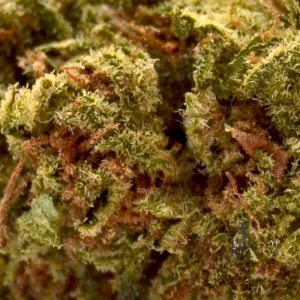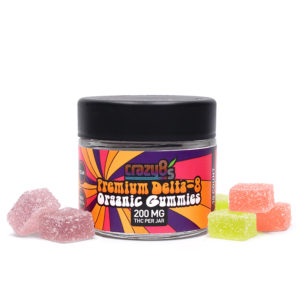Initially, CBD was touted as the go-to remedy for almost every ailment. Today, we know better.
Although scientists have barely scratched the surface, through all of the hype, one thing has stayed consistent — the potential therapeutic benefits of CBD for pain relief.
MEDICAL DISCLAIMER: This article is not intended to be used as medical advice. Always talk to your physician before starting any new supplements like CBD.
Last Update: July 13, 2023
Article Summary
- Cannabidiol (CBD) is a non-intoxicating organic compound that naturally occurs in hemp and marijuana. CBD flower contains moderate to high levels of CBD, a cannabinoid that’s also recognized for its potential therapeutic benefits for pain.
- This cannabinoid interacts with receptors in the endocannabinoid system (ECS) which plays an essential role in pain regulation.
- CBD-based medications are not officially approved for pain in the U.S. But, CBD can be used for pain management in consultation with a doctor.
- Studies show potential for CBD in managing inflammation and pain. However, its beneficial effects depend on the condition being treated.
- Choosing the right CBD product is key for pain management. Options include ingestibles (CBD oil, tinctures, capsules, edibles), smokables (CBD flower, pre-rolls, vape cartridges), and topicals.
- The route of administration impacts bioavailability, with oral consumption, sublingual consumption, and vaporized consumption having different efficiency rates. With that said, vaporized consumption (smoking and vaping) offers the fastest relief.
- Dosage can be determined through a “start low and gradually increase” approach while keeping in mind that high doses of CBD aren’t necessarily more effective than lower doses.
What is CBD?
Cannabidiol (CBD) is a primary hemp cannabinoid.
It’s a non-intoxicating organic compound that naturally occurs in large quantities in both marijuana and CBD flower.
Out of over 100 compounds found in cannabis, CBD is the second most well-researched. THC remains the best-researched and most popular compound in cannabis due to its intoxicating properties that get the “high.”
CBD is the main component in full spectrum, broad spectrum, and CBD isolate products. Studies show that CBD could be beneficial for pain, but not all types of pain.
How Does CBD Work for Pain?
CBD-based medications are not officially approved for pain in the U.S. As of this writing, the only CBD drug approved for use by patients is Epidiolex, but for rare forms of epilepsy.
However, CBD can be used for pain management in an agreement with a doctor. You don’t need a prescription to buy hemp-derived CBD in the U.S., but consulting a doctor is beneficial to see how to merge this compound with your pain meds.
The exact mechanisms of how CBD affects the body to alleviate pain are unknown.
Cannabinoids, including CBD, interact with the receptors of the endocannabinoid system (ECS) to influence bodily functions. The ECS is a complex network of neurotransmitters that maintains balance in the body. The ECS plays an essential role in pain, sleep, and mood regulation, among others.
The two main receptors of the ECS are CB1 receptors (located in the brain) and CB2 receptors (located throughout the body). The role of these receptors is to receive chemical signals from different stimuli and get the cell to respond.
CBD doesn’t directly bind to CB1 receptors, but it may influence some CB2 receptors, which are involved in regulating pain [1].
Research suggests that CBD could activate non-cannabinoid receptors, such as the glycine receptors, which play a role in the perception of pain.
It’s also believed that CBD alleviates inflammation in the cell, which helps reduce pain.
CBD for Chronic Pain
Several studies have investigated CBD for general chronic pain [2, 3].
Some studies have found that CBD shows potential for chronic pain relief, but its effects depend on the condition treated.
Most of these studies have found that CBD can help with inflammation, including one published in the Journal of Experimental Medicine [4].
Aside from the revelation that CBD can help reduce pain and inflammation, the researchers found that it’s unlikely to build a tolerance to CBD. This means that the user doesn’t have to increase the dose over time but keep a more or less similar dose for pain management.
CBD for Arthritis
CBD could reduce inflammation in arthritis pain, animal studies show. With that being said, we need more research on humans.
A study published in the European Journal of Pain examined the effects of CBD on arthritis in mice. The results showed that when applied directly on animal skin, CBD could help lower inflammation and pain due to arthritis [5].
According to a 2017 study published in the journal Pain, CBD prevented the development of nerve damage and pain in mice with osteoarthritis [6].
CBD oil has shown positive effects on arthritis pain in humans, but more relevant studies are needed. For now, there’s only anecdotal evidence that CBD is beneficial for arthritis pain.
CBD for Neuropathic Pain
In the UK, CBD, together with THC, is an approved medicine for multiple sclerosis (MS). The potential effectiveness of CBD in alleviating pain is also seen in patients with neuropathic pain (MS pain).
According to a study, patients with MS, spinal cord injury and limb amputation were given a sublingual spray of THC and CBD. The patients felt “pain relief by both THC and CBD significantly superior to placebo [7].”
It’s unfortunate that some people who suffer from these conditions don’t respond to traditional therapy. Although CBD shows promising results in alleviating chronic pain, further research is needed.
How to Choose the Right CBD Product for Pain Management
If you want to try CBD for pain, choosing the right product is key.
There are three types of CBD products:
- Ingestibles: CBD oil in the form of tinctures, CBD drops, capsules, sprays, as well as CBD edibles such as gummies, brownies, cookies, etc.
- Smokables: CBD flower, hemp pre-rolls, or concentrates like wax, crystalline isolates, CBD-rich vape cartridges.
- Topicals: Transdermal patches with CBD, CBD-infused balms, lotions, soaps, and bath bombs.
Depending on the type of pain you are experiencing, you can try various CBD products.
When it comes to chronic pain, so far, most studies use CBD oil drops administered orally or sublingually.
Capsules and pills are also commonly used for chronic pain caused by fibromyalgia, arthritis, osteoarthritis, and other pain caused by inflammatory processes. Consider creams and lotions for localized arthritis pain.
Is Every CBD Product Equally Effective?
The route of administration, or the way you take your CBD, matters.
Bioavailability, or the degree to which the substance is absorbed into your body, is directly connected to the effectiveness of CBD. Different routes of consumption, for example, edibles compared to smokables, have different bioavailability rates tied to their effectiveness.
- Oral consumption: Oral consumption doesn’t promise the most effective bioavailability rates, which range between 4% and 20%. Due to delayed onset of effects, oral products, like oils and edibles, are recommended for chronic pain that doesn’t require instant relief.
- Sublingual consumption: The sublingual gland located under the tongue helps CBD oil to enter directly into the bloodstream. The bioavailability of sublingual administration of tinctures and sprays is 35%, making this route second most efficient.
- Vaporized consumption: With high bioavailability rates, up to 46%, inhalation is an effective way to treat chronic pain. Take advantage of the most effective method for consuming CBD and try our CBD hemp flowers. It’s a fast way of getting CBD and other cannabinoids absorbed directly into your bloodstream, so you’ll notice the effects shortly after the first take.
CBD Oil for Pain Management: Types, Dosage & Quality
If you want to try CBD oil for pain, there are a few things to consider.
Type of CBD Oil
You should try different types of CBD oils for pain to see which works for you. Based on studies and anecdotal evidence, we recommend our full spectrum phytocannabinoid-rich (PCR) hemp oil.
Compared to pure CBD-only isolate and broad spectrum (THC-free) CBD oil, we believe that full spectrum CBD oil that contains small amounts of THC (less than 0.3%) is more beneficial.
Our PCR hemp oil contains the entire hemp plant profile, from the cannabinoids to the terpenes and other phytonutrients. It’s a highly beneficial product because it brings the therapeutic effects of the ‘entourage effect,’ which isolates don’t.
Read More: What is PCR Hemp Oil And How It Compares to Other CBD Products?
CBD-Infused Full Spectrum Gummies
Full spectrum CBD oil can be infused into a gummy product.
CBD gummies are one of the most convenient products. You can take them everywhere you go, and they are easy to dose.
Mr. Hemp Flower offers the best gummies on the market. Our Full Spectrum CBD Gummies are infused with our full spectrum oil (25 mg CBD) and are a delicious and healthy vegan treat. They are absolutely potent, so consider yourself warned.
Gummies can take up to 2 hours to start working, so make sure to calculate this time into your morning, afternoon, or bedtime routine. Due to delayed onset, they may not be the best option for pain relief, but they can be managed.
Dosage
Determining the right dosage can seem like a challenge, but it doesn’t have to be.
Simply follow the rule of thumb on dosing “start low and, if necessary, increase the dose gradually.” This takes the pressure off you to hit the right dose from the start.
You can even begin with a low 2.5 mg dose twice a day and start experimenting from there. Keep in mind that finding the optimal dose of CBD is a matter of trial and error, so it’s important to track your progress.
If you notice that you’ve spent days taking the same dose without any improvements, try to increase the dose and see if that works better.
Here are a few tips to help you out:
- You cannot overdose on CBD. Even if you take a higher dose, you are not going to feel any serious side effects. There hasn’t been a reported case of marijuana overdose, either.
- You cannot get addicted to CBD. Unlike alcohol, heroin, cocaine and prescription pills, CBD cannot get you addicted. You can start using CBD and stop at any time and won’t have any withdrawal symptoms. Also, some studies have shown the potential benefits of CBD in people with drug addiction and withdrawal symptoms.
High doses of CBD are not necessarily more effective than lower doses.
Studies have repeatedly touted the effectiveness of CBD in low to moderate doses, as opposed to high doses. It is interesting how a tiny dose of 2.5 mg CBD combined with a low percentage of THC can have potent therapeutic effects in some cases.
Always go with products that have a percentage of CBD mg per dose instead of the percentage of CBD oil per bottle. This will also help you manage the dose easily.
Quality Products
Only use CBD oil from a reputable brand.
It’s important to only select products that are made using organically cultivated hemp and are subtracted using the CO2 or ethanol (FDA-approved) method.
Mr. Hemp Flower is an established industry leader that provides clean, organic PCR hemp oil extracted using ethanol extraction. Ethanol is regarded as safe by the FDA. This all-natural solvent evaporates quickly and leaves no traces if the extraction process is done right.
CBD Hemp Flower Strains for Pain Management
CBD flower offers the fastest way to ease physical discomfort.
As mentioned earlier, inhalation offers the highest bioavailability among all consumption methods because it allows cannabinoids to travel directly to the bloodstream.
Smoking is not the healthiest option, but it’s especially convenient for easing aches and pains before bed.
If you want to try CBD flower for pain, Mr. Hemp Flower offers organically grown CBD hemp flower strains rich in cannabinoids and terpenes. Some of our best strains are Cheese (17.8% CBD) and Bubba Kush (14% CBD).
We offer both indica and sativa strains containing moderate to high CBD content and primary terpenes like myrcene, caryophyllene, pinene, and limonene.
For a complete list of the best CBD flower strains for pain relief, check out this article.
CBD from Hemp vs. CBD from Marijuana
CBD is naturally found in hemp and marijuana, which are plant variates of the same cannabis species, Cannabis sativa.
In both plants, cannabidiol (CBD) is the same substance.
Chemically, there is no difference between CBD from hemp and CBD from marijuana. The chemical structure of the compound is the same in both sources.
The only difference is in their legality.
CBD derived from hemp is a legal substance under the 2018 Farm Bill. Marijuana, on the other hand, is still a Schedule I drug at the federal level.
CBD Extraction Methods
CBD oil is made by extracting cannabidiol from the hemp flower. After extraction, the cannabinoid gets diluted with a carrier oil, like coconut or hemp seed oil.
The quality and safety of the CBD oil depends on the extraction process.
Another important thing to check is whether or not the oil has been extracted from organically cultivated hemp. This is important because you don’t want to consume contaminated CBD for pain.
The three most common CBD extraction methods are:
- CO2 Extraction: Known as the safest extraction method, CO2 extraction is considered the best because it produces a pure and potent product.
- Ethanol Extraction: The ethanol extraction method is used to create high-quality oil that can be used for vape pens. A downside to this extraction method is that it may contain lots of residual by-products that can affect the final product.
- Olive Oil Extraction: CBD oil extraction is done by using olive oil.
Potential Side-Effects of CBD
Anecdotally, CBD is known as generally safe. Its safety hasn’t been confirmed by the Food and Drug Administration (FDA).
With that said, very large doses of CBD can cause some adverse effects, especially in people who are more sensitive. The most common side effects from CBD are:
- Dry mouth
- Mild nausea
- Irritability
- Feeling mellow or anxious
- Sleeping problems
- Drowsiness
- Low blood pressure
- Allergic reaction (rare)
If you’re on pain meds, you need to consult a doctor before incorporating CBD into your routine.
Cannabidiol can interact with other drugs, including NSAIDs, which are commonly prescribed for pain. Talk to your physician regarding CBD drug interactions to help you find a solution.
FAQs on CBD for Pain Management
What is the best method of CBD for pain?
It really depends on what you’re looking for. For fastest relief, CBD flower taken through inhalation offers immediate results. CBD gummies offer easy dosing, but can take a few hours to fully kick in.
How does CBD reduce pain?
CBD works with the receptors of the endocannabinoid system to reduce inflammation and help with pain management. The exact mechanisms for pain relief that CBD uses are not entirely known.
Is CBD as effective as ibuprofen?
Ibuprofen typically provides a faster relief than CBD, while CBD can be more helpful if taken over a longer period of time. It’s up to you whether you feel sufficient relief from CBD and don’t need to take ibuprofen.
























